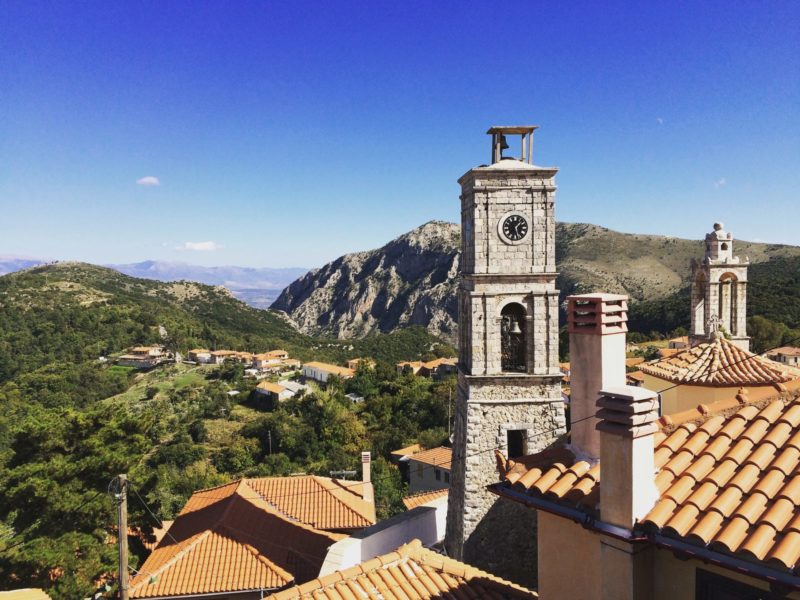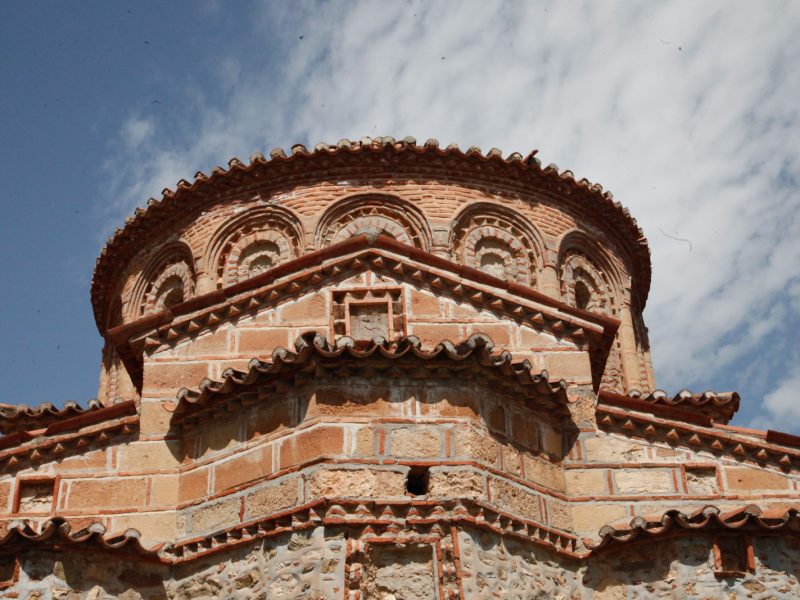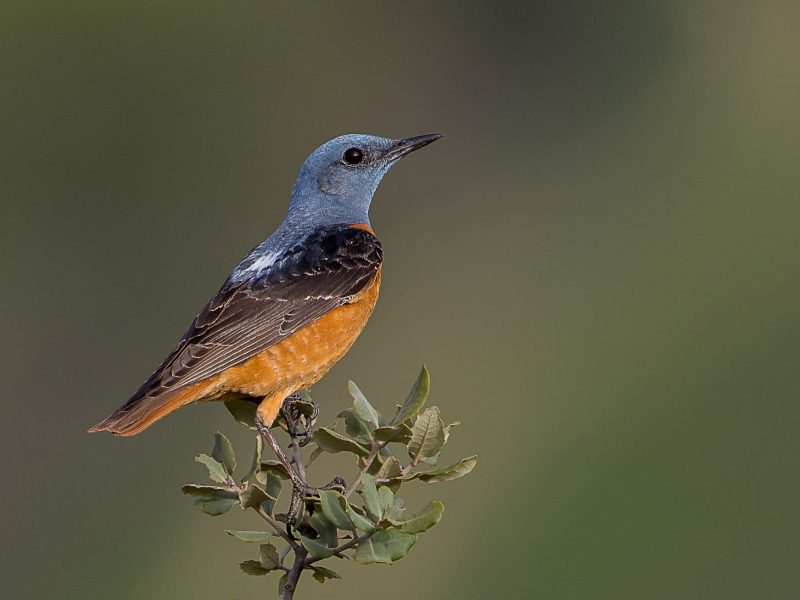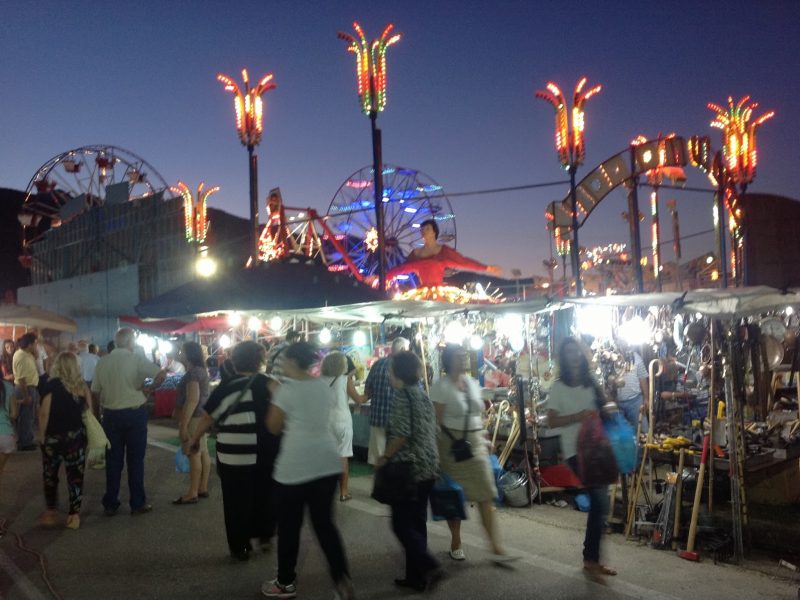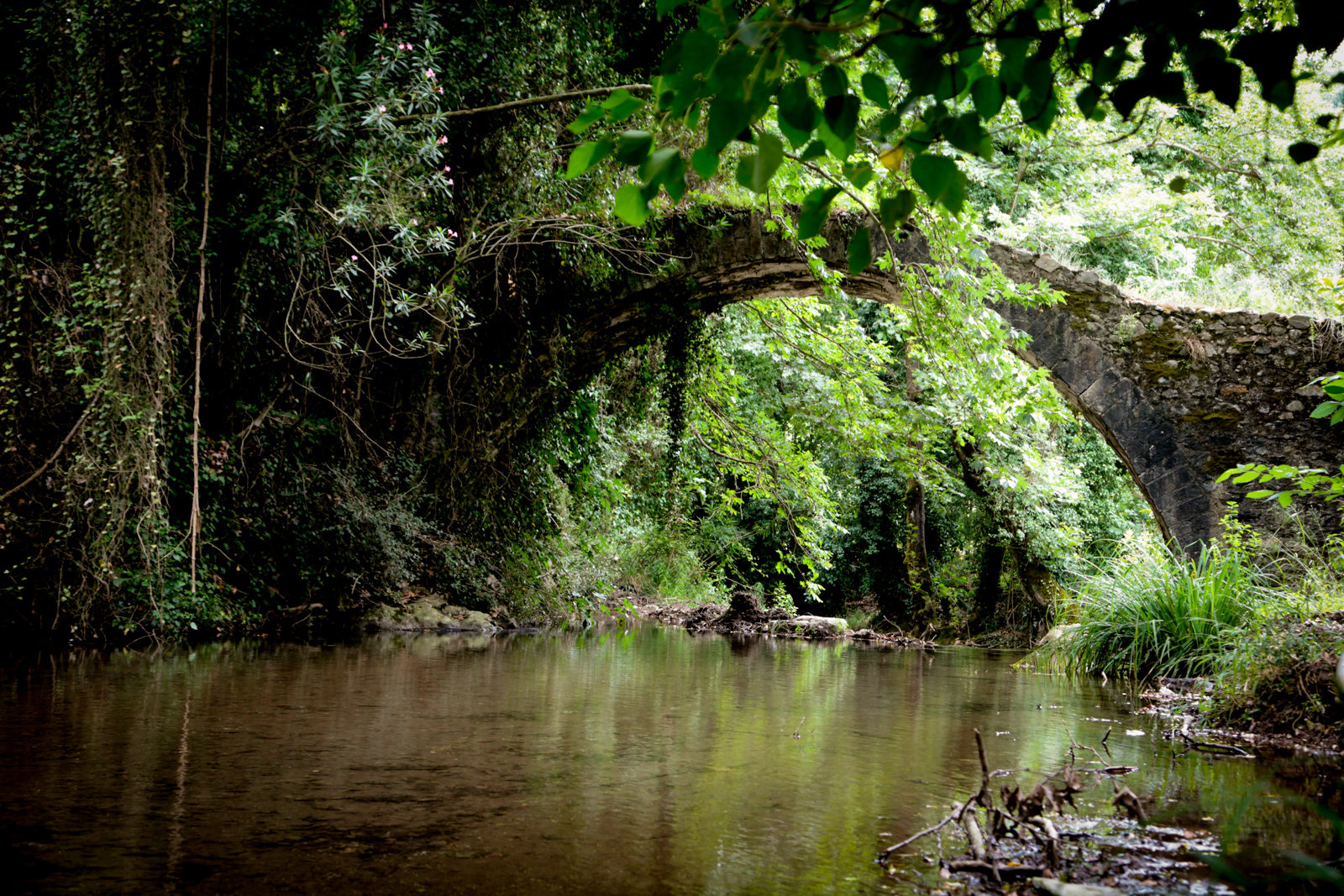
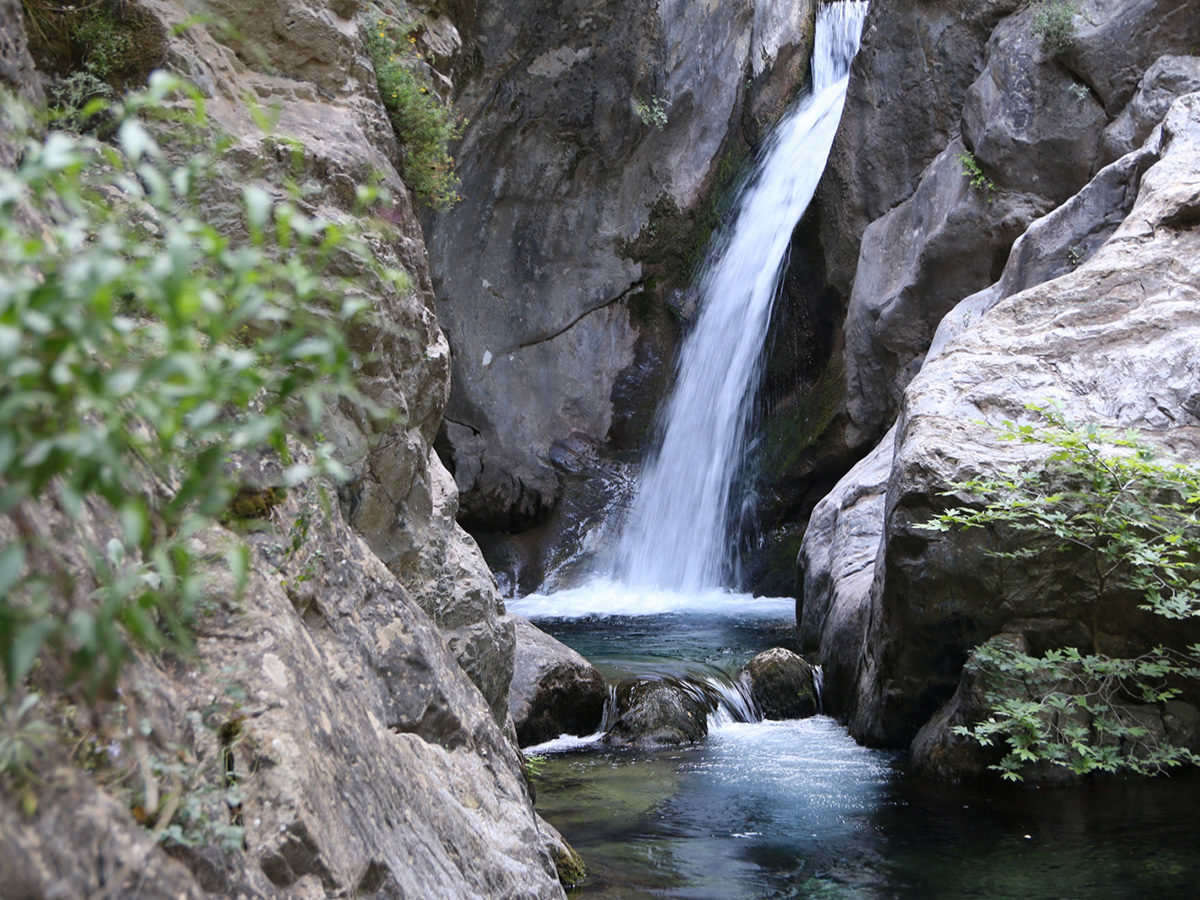
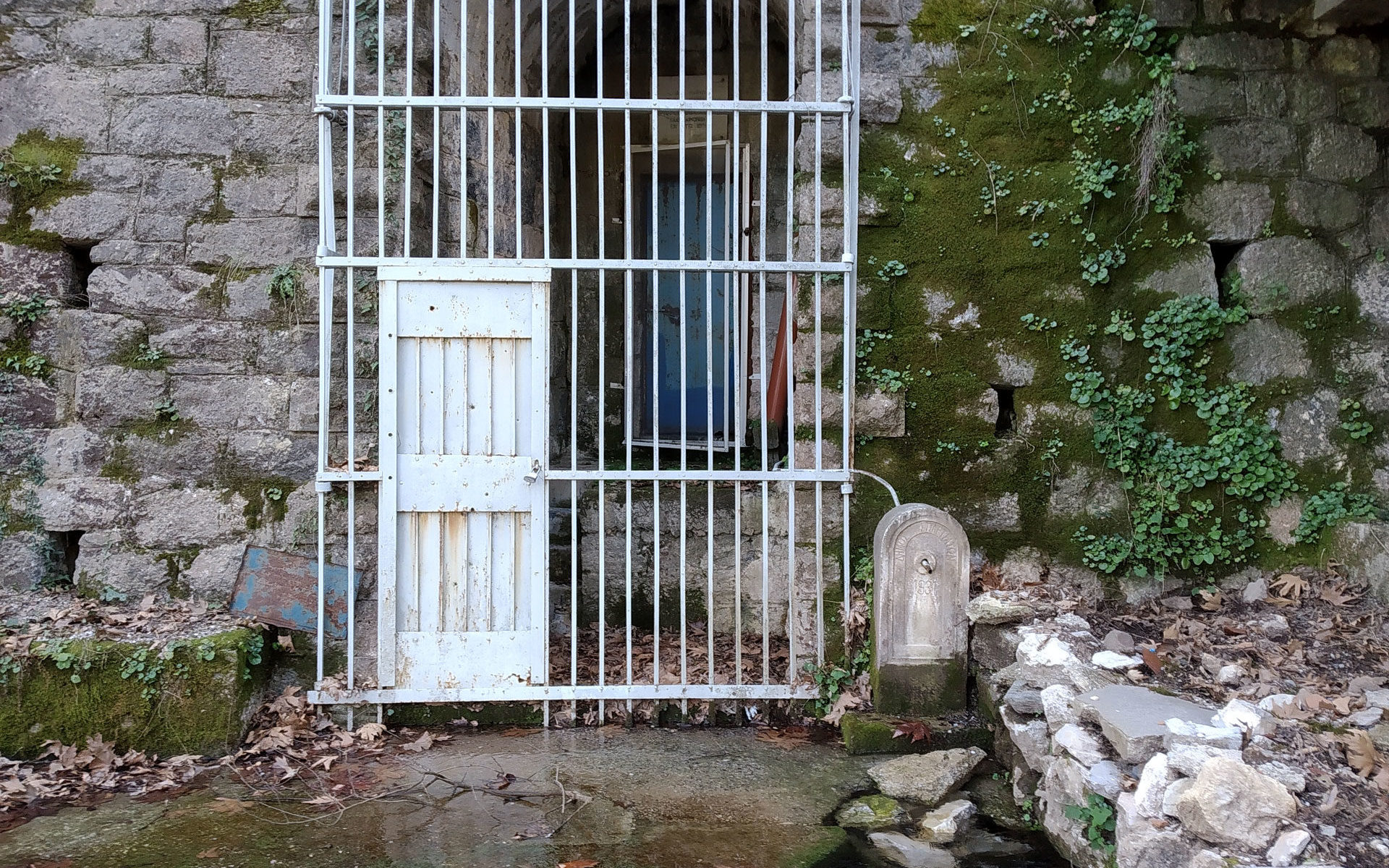
Trypi (Municipality of Sparta – Regional Unit of Laconia) is a picturesque village that is located just 6 km from the Castle of Mystras and 9 km from Sparta towards Kalamata.
The location is endowed by nature with unique beauties. It is built amphitheatrically on the slopes of the mountain at an altitude of 640 m. and at the entrance of the Great Gorge (Megali Lagkada) of Taygetos, surrounded by a forest of cypresses and pines, which together with the area of Lagkada have been included in the Natura 2000 program, covering a total area of about 1600 hectares (about 16,000 acres).
According to tradition, Trypi owes its name to the fact that it is a passage-hole to the neighbouring district of Messinia. Others believe that it was named after the hole of the cave of Kaiadas, often identified with the “Depositors”, where the ancient Spartans are said to have thrown the disabled or sickly infants in order to ensure their eugenic race. During the 18th and 19th centuries, Trypi was an important commercial and intellectual center of the area, due to its privileged geographical position.
The visitor, here, can enjoy the crystal clear waters of the springs Karvasaras and Vasiloneri, while at a distance of five minutes from the main road there is also the river Knakion. Every year, in September, a big festival with tradition dances and songs takes place at the springs of the river, on the occasion of the celebration of the church of Agios Ioannis.
In total there are seventeen churches in the village, among which stand out the Byzantine church of Agioi Theodoroi, the Dormition of Theotokos, as well as the ruined monastery of Agios Ioannis Prodromos, which is built in the lush environment of plane trees.
Source: lakonia.mobi
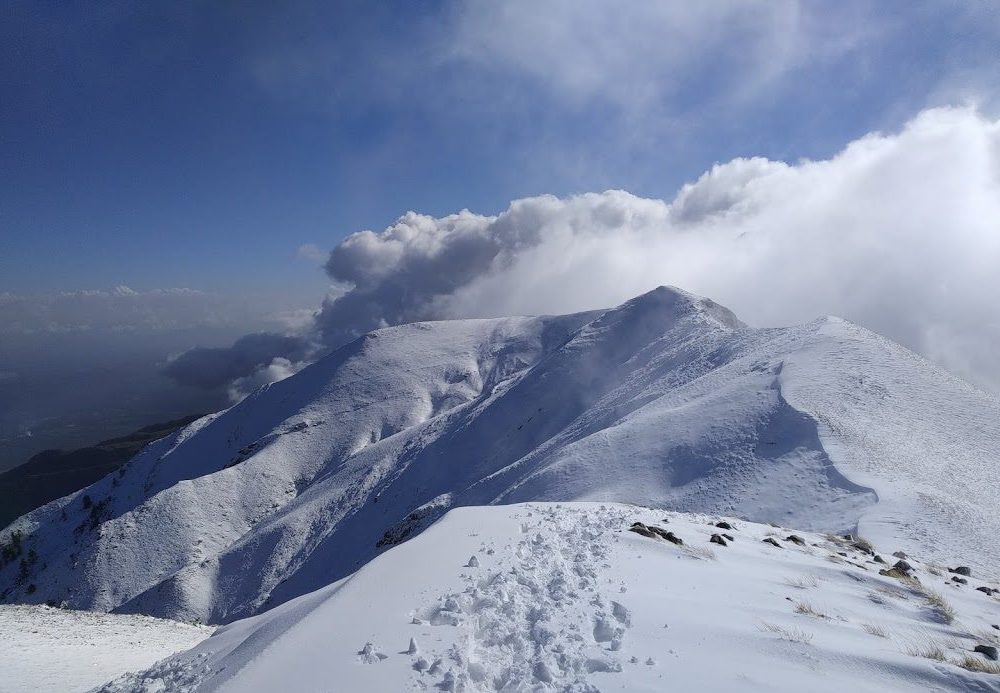
Car
From Athens: 218 km, 2.5 hours
From Kalamata: 98 km, 1 hour
The route follows the A6 (Attiki Odos), A8 (Elefsina-Corinth) and A7 (Corinth-Tripoli) highways, and then the A71 (Lefktro-Sparti) highway.
Bus
From Athens: 226 km, 3.5 hours
From Kalamata: 102 km, 1 hour
KTEL Lakonia operates several daily routes to and from Athens. These routes also serve the Sparta-Tripoli and Sparta-Corinth lines.
From the airport
From Eleftherios Venizelos – Athens Airport: 248 km, 2.5 hours
From Kalamata airport: 96 km, 1 hour
The road transition from Kalamata to Sparta takes about an hour. The route follows the A7 highway (Kalamata-Tripoli) and then the A71 highway (Lefktro-Sparti).
For road access to the paths of the present study, the following road network can be used:
The Sparti – Logastra provincial road
The Spartis – Kalamata highway
The national road Spartis – Mystras
The Spartis – Gytheio national road
The Spartis-Mystra provincial road
Amykles-Kalyvia Sochas street
Kalyvia Sochas – Sochas street
Mystra-Pikoulianika street
Mystras-Taygeti street
Taygeti – Pergandaika street
The Mystras-Vlahochori street
Agios Ioannis-Anavrytis street
In addition to the above paved roads, there are a number of existing forest and rural roads, mainly dirt, which allow access to the existing paths.
Η περιοχή προσφέρει μεγάλη ποικιλία χώρων διαμονής για όλα τα γούστα. Μπορείτε να βρείτε πέτρινα παραδοσιακά σπίτια και ξενώνες, μικρά ξενοδοχεία, resorts πολυτελείας και ενοικιαζόμενα δωμάτια, στο Μυστρά, Παρόρι, στα Πικουλιάνικα, στην Τρύπη, στην Αναβρύτη και στην Ταϋγέτη.
Για περισσότερες πληροφορίες: https://www.exploresparta.gr/tourism/diamoni/
From the main local products of the Spartan land the following stand out: olives of the “Kalamon” variety & virgin olive oil, oranges, honey, wine with the typical Kydonitsa, Mavroudi, Roditis, Athiri and Agiorgitiko varieties, synglino, sausage, pasta, trout and salmon.
Some of the most typical traditional dishes that you can look for on your trip are: Bouzopoula, Kokoras bardouniotikos, Pitaroudes, Kayanas, Kolokythokorphades.
More info at exploresparta.gr
Hiking boots, hat, sunscreen, long pants, water at least 1.5 liters, food, compass, whistle, flashlight, knife or multi-tool, watch and baton. In winter, windproof jacket, waterproof and isothermal clothes.
We also suggest that you never walk alone and always have a first aid kit with you. A well-charged mobile phone will come in handy in difficult situations.
You can hike all year round, except in the winter months when snow may close some paths. Spring and autumn are considered the best seasons thanks to mild temperatures and colourful nature. Due to the altitude, the air can be strong and icy. In summer (July, August) it may be hot enough to walk.
It is important toBefore every hike we are informed about the weather conditions.
We do not stray from the boundaries of the path.
We use fireplaces and avoid fires.
We don’t leave trash. On the path we collect rubbish that may have been left by others.
We do not destroy the vegetation, we respect the historical monuments and the local populations.
We respect wild animals and do not feed them.
Source: trailpath.gr
In the past, there were large mammals that today have disappeared such as bears, deer, roe deer, wolves and even the lynx. Today, 19 mammals have been observed in the mountain fauna, including the fox, badger, ferret, hare and hedgehog. Wildcat and jackal have also been reported although the population status of these species is not well documented. The only large mammal that is often seen is the wild boar.
In the event of the appearance of snakes, as a preventive measure, the hiker can be careful where he steps and where he puts his hands. If you encounter a snake, stay calm and keep a distance of at least two to three meters without disturbing it. In the event that you are bitten by a snake, stay calm, call 166 or 112 and take no action at all, except go to the health center with the help of an attendant. We recommend that you never walk alone.



